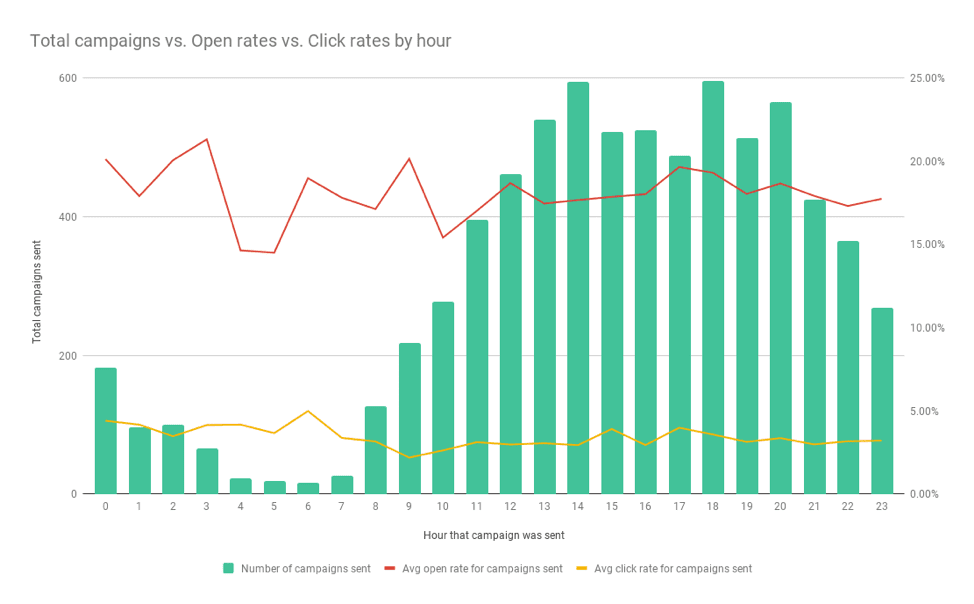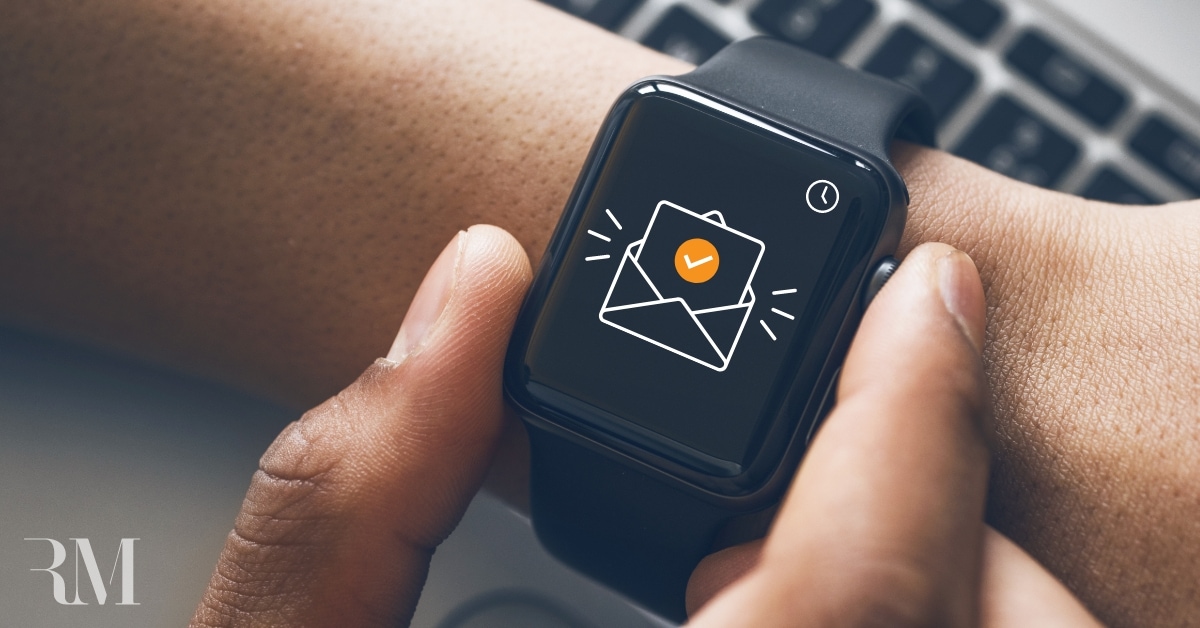The best time to send an email marketing campaign is in the morning. Studies show that emails sent between 9 a.m. And 11 a.m. Get the highest open rates.
Email marketing timing matters. It can make or break your campaign. Sending an email at the right time means better engagement and more clicks. But what exactly is the best time? Factors like audience habits and time zones play a role.
Understanding these can boost your success. In this post, we will explore the ideal times to send your emails. You will learn how to reach your audience when they are most likely to read your message. Stay tuned for useful tips and insights.
Importance Of Timing In Email Marketing
Timing is crucial in email marketing. Sending emails at the right time can make a big difference. It affects open rates and click-through rates. Let’s explore why timing is so important.
Impact On Open Rates
Open rates show how many people open your email. The time you send your email impacts open rates. If you send it at the wrong time, fewer people may see it.
Research suggests sending emails in the morning. Many people check their emails first thing. The best days are Tuesday, Wednesday, and Thursday. People are usually busy on Mondays and Fridays.
Example:
- Tuesday at 10 AM
- Wednesday at 9 AM
- Thursday at 11 AM
Influence On Click-through Rates
Click-through rates measure how many people click links in your email. Good timing can improve click-through rates. Emails sent at peak times get more attention.
Evening emails often perform well too. People relax and check their emails after work. Sending emails between 6 PM and 8 PM can be effective.
Example:
- Tuesday at 7 PM
- Wednesday at 6:30 PM
- Thursday at 8 PM
By understanding the importance of timing, you can improve your email marketing success.

Credit: www.smartinsights.com
Factors Affecting Optimal Send Time
Understanding the best time of day to send email marketing campaigns can be challenging. There are several factors affecting the optimal send time that marketers need to consider. Knowing these factors can help you maximize your email open rates and engagement.
Audience Demographics
One of the most crucial factors is audience demographics. Different age groups, locations, and lifestyles affect email engagement. For example, emails sent to working professionals may perform better during lunch breaks or early mornings.
Consider the following when analyzing your audience:
- Age: Younger audiences might check emails late at night. Older audiences may prefer mornings.
- Location: Time zones play a vital role. Schedule emails to reach recipients during their peak hours.
- Lifestyle: Busy parents might check emails in the evening after kids go to bed.
Industry-specific Trends
Different industries have unique trends that affect optimal send times. Understanding these trends can enhance your email marketing strategy.
Below is a table showing common industry trends:
| Industry | Optimal Send Time |
|---|---|
| Retail | Weekdays, early mornings |
| Technology | Weekdays, mid-morning |
| Healthcare | Weekdays, late afternoons |
| Media | Weekends, evenings |
Adapting to these trends can help you reach your audience when they are most responsive. Experiment with different times and analyze the results to find what works best for your industry.
Morning Email Campaigns
Sending emails in the morning can be a smart choice for marketers. Many people start their day by checking their inboxes. This makes morning a prime time for your message to be seen. Let’s dive into the advantages and best practices for morning email campaigns.
Advantages Of Early Mornings
- High Open Rates: People are more likely to open emails in the morning.
- Fresh Minds: Recipients are more alert and receptive to new information.
- Less Competition: Fewer emails are sent in the morning compared to later in the day.
Starting your email campaign early can give you a competitive edge. Your email is more likely to be seen and read when people are fresh and focused.
Best Practices For Morning Sends
- Time It Right: Send your email between 6 AM and 10 AM for best results.
- Segment Your List: Target specific groups who are most likely to open emails in the morning.
- Engaging Subject Lines: Use catchy and relevant subject lines to grab attention.
- Mobile Optimization: Ensure your email looks good on mobile devices.
- A/B Testing: Test different send times to find what works best for your audience.
Following these best practices can improve your morning email campaign’s effectiveness. Remember, the key is to reach your audience when they are most likely to engage with your content.

Afternoon Email Campaigns
Afternoon email campaigns can be very effective. People often check their emails during lunch breaks or after lunch. This period offers an opportunity to catch their attention.
Benefits Of Midday Sends
Sending emails in the afternoon can increase open rates. People are generally more relaxed after lunch. They may have more time to read emails.
Afternoon sends can also lead to higher click-through rates. Recipients are less likely to be overwhelmed by emails. This can result in more engagement with your content.
Strategies For Afternoon Engagement
Segment your audience for better results. Tailor your content to their interests. Use catchy subject lines to grab attention. Keep the email content short and to the point.
Test different send times. Experiment with sending emails at various times in the afternoon. Analyze the results to find the best time.
Include a clear call-to-action. Make it easy for recipients to know what to do next. This can help increase conversions.
Evening Email Campaigns
Choosing the right time to send emails is crucial for success. Evening email campaigns can be particularly effective. Let’s explore their benefits and strategies.
Pros Of Evening Sends
Sending emails in the evening has several advantages:
- Higher Open Rates: People often check their emails after work. This increases the chance of your email being opened.
- Less Competition: Fewer businesses send emails in the evening. Your email stands out more.
- More Engagement: Recipients are more relaxed in the evening. They’re likely to engage more with your content.
Tactics For Nighttime Emails
Implement these tactics for successful evening email campaigns:
- Personalize Your Content: Use the recipient’s name and tailor the message to their preferences.
- Optimize Subject Lines: Create compelling subject lines that grab attention.
- Test Send Times: Experiment with different times between 7 PM and 10 PM. Identify the optimal time for your audience.
- Analyze Metrics: Monitor open rates and click-through rates. Adjust your strategy based on data.
Weekend Vs. Weekday Sends
Email marketing timing can make or break your campaign. Many marketers debate over the best time to send emails. Should you send them on weekdays or weekends? Each option has its own advantages. Understanding these can help you make a better decision for your audience.
Performance On Weekdays
Weekdays are traditional for email marketing. People usually check their emails more often during workdays. Monday through Thursday mornings generally see higher open rates. This is because people are fresh and ready to start their day. Tuesday and Thursday mornings often perform the best. People are not overwhelmed with Monday tasks or preparing for the weekend. Afternoon sends might work for some, especially if targeting different time zones. Avoid sending emails late in the afternoon or late at night.
Effectiveness Of Weekend Emails
Weekend emails might seem risky. Yet, they can be effective. Many people have more free time on weekends. This means they might open and read your emails more carefully. Saturday and Sunday mornings often show good results. People are relaxed and tend to check their personal emails. Weekend sends can stand out because fewer marketers use this time. Testing is key. Try sending emails on different days and times. This will help you understand your audience better.
Testing And Analyzing Send Times
Understanding the best time of day to send an email marketing campaign is crucial for maximizing open rates and engagement. One effective way to determine this is by testing and analyzing send times. This involves using various methods to identify the optimal time for your audience. Below are key approaches to achieve this:
A/b Testing Methods
A/B testing, also known as split testing, is a powerful method to pinpoint the best send times. Here’s how you can implement it:
- Divide your email list into two equal groups.
- Send emails to both groups at different times.
- Compare the open rates and click-through rates (CTR) of both groups.
For instance, you might send Group A an email at 9 AM and Group B at 3 PM. Track which time results in higher engagement. Repeat this process with different times to gather more data.
Analyzing Campaign Data
After conducting A/B tests, the next step is to analyze the campaign data. This involves examining various metrics to understand the effectiveness of different send times.
| Metric | Description |
|---|---|
| Open Rate | The percentage of recipients who open your email. |
| Click-Through Rate (CTR) | The percentage of recipients who click on links in your email. |
| Conversion Rate | The percentage of recipients who complete a desired action. |
Use analytics tools to track these metrics. Look for patterns and trends that indicate the most effective send times. For example, if emails sent at 10 AM consistently show higher open rates, this might be your optimal time.
By combining A/B testing methods with a detailed analysis of campaign data, you can determine the best time to send your email marketing campaigns. This approach ensures your emails reach your audience when they are most likely to engage, leading to better results and higher ROI.
Tools For Optimizing Send Time
Choosing the best time to send your email marketing campaigns can significantly impact your open and click-through rates. To achieve optimal results, leveraging specialized tools is essential. These tools help analyze your audience’s behavior and automate the process, ensuring your emails land in your subscribers’ inboxes at the perfect moment.
Automation Software
Automation software like Mailchimp and HubSpot allows you to schedule emails based on subscriber activity. This software can track user interactions and send emails when your audience is most engaged.
- Mailchimp offers a feature called “Send Time Optimization” that analyzes data to recommend the best time to send emails.
- HubSpot provides a similar feature, using predictive analytics to determine the optimal send time for each contact.
These tools save you time and increase the effectiveness of your email campaigns.
Analytics Tools
Analytics tools like Google Analytics and Litmus can offer insights into your audience’s behavior. These tools help you understand when your subscribers are most active and engaged.
- Google Analytics tracks user activity on your website, giving you a detailed view of peak times.
- Litmus provides email analytics, showing you when your emails are opened and read.
Using these insights, you can adjust your email send times to match your audience’s habits.
To summarize, leveraging automation software and analytics tools can significantly improve the timing of your email marketing campaigns. By understanding your audience’s behavior and automating the process, you can ensure your emails are seen at the right time, enhancing engagement and driving better results.
Case Studies On Email Send Times
Understanding the best time of day to send an email can impact your marketing success. Analyzing case studies on email send times provides valuable insights. Learn from successful campaigns and understand why some failed.
Successful Campaign Examples
Several companies have shared their success stories. They experimented with different email send times and achieved remarkable results.
| Company | Send Time | Open Rate | Click Rate |
|---|---|---|---|
| Company A | 10:00 AM | 30% | 12% |
| Company B | 2:00 PM | 28% | 10% |
| Company C | 9:00 AM | 35% | 15% |
Company A saw a 30% open rate by sending emails at 10:00 AM. Company C achieved a 35% open rate with a 9:00 AM send time. These results highlight the importance of morning hours for email engagement.
Lessons Learned From Failures
Not all campaigns succeed. Some learned hard lessons about the importance of timing.
- Sending emails late at night often results in low open rates.
- Weekends may not be ideal for business-related emails.
- Ignoring audience behavior can lead to poor campaign performance.
One company sent emails at 11:00 PM and saw open rates drop to 5%. Another tried Sunday mornings and received minimal engagement. These failures taught them the value of understanding their audience’s habits.
By analyzing both successes and failures, businesses can better determine the optimal send times for their email campaigns. This knowledge helps in crafting strategies that maximize engagement and drive results.
Tips For Finding Your Best Send Time
Finding the best time to send email marketing can boost engagement. Sending emails at the right time ensures more opens and clicks. But how do you find the perfect time? Here are some tips to help you discover the best send time for your audience.
Tailoring To Your Audience
Know your audience well. Different groups have different habits. For example, business professionals check emails early in the morning. On the other hand, students might check emails in the afternoon. Analyze your audience’s daily routine. This will help you choose the best time to send your emails.
Adjusting Based On Performance
Look at your past email campaigns. Check the open and click rates. This data shows which times worked best. If you notice more engagement at a specific time, use it. Also, experiment with different times. Send emails at various hours and compare results. This way, you can find the most effective time for your audience.

Credit: www.getresponse.com
Frequently Asked Questions
What Is The Best Time To Send Marketing Emails?
The best time to send marketing emails is between 10 AM and 11 AM. This is when most people check their emails.
Why Is Timing Important For Email Marketing?
Timing is crucial for email marketing because it affects open and click-through rates. Emails sent at the right time are more likely to be read.
Does Day Of The Week Matter For Email Marketing?
Yes, the day of the week matters. Emails sent on Tuesdays and Thursdays have the highest open rates.
Should I Send Marketing Emails In The Morning Or Evening?
Morning is generally better for sending marketing emails. People are more likely to check their emails in the morning.
Conclusion
Finding the best time to send email marketing is crucial. Timing impacts open rates and engagement. Morning hours often work well. Midweek days like Tuesday and Thursday show good results. Test different times for your audience. Analyze your data regularly.
Know your audience habits. Adjust your strategy based on findings. Stay consistent with your email schedule. Keep emails relevant and engaging. Success in email marketing requires careful planning. Right timing can make all the difference. Happy emailing!




